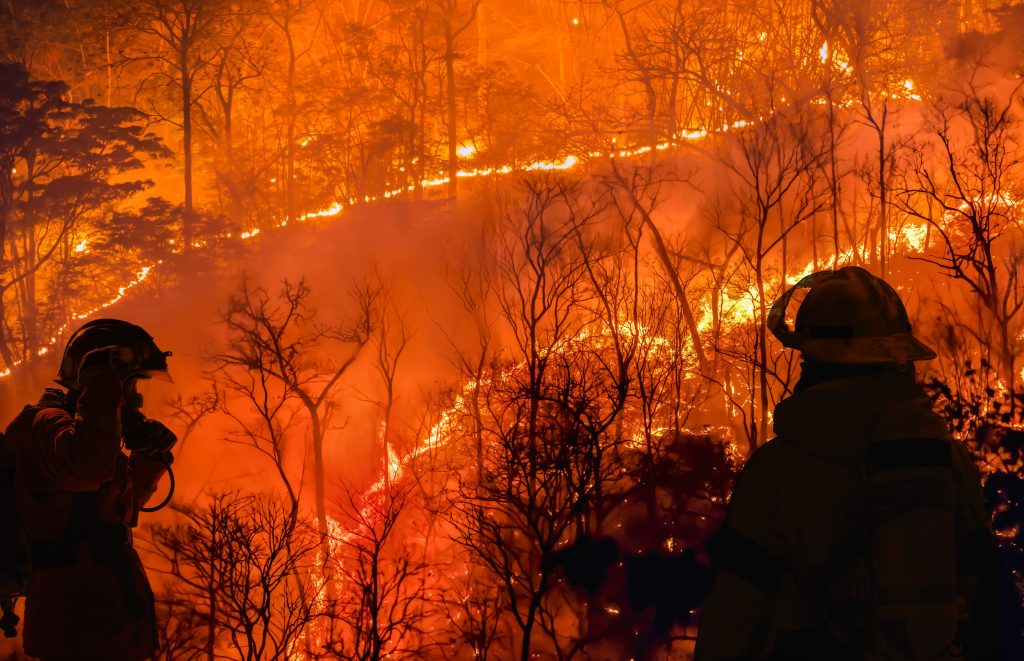
There is a new blog post out at the Southern Plains Perspective. Read below! The Southern Plains Perspective is authored by Clay Pope- who farms with his wife Sarah and is a contractor for the USDA Southern Plains Climate Hub in the area of outreach. Read below!
You can always tell where a person is from based on how they respond to a severe weather warning. Years ago, I was at a national organization meeting in Wichita, Kansas when the national weather service issued a tornado watch for our area. Now for those of us who grew up in “tornado alley” this was no big deal—heck, until you get a tornado warning you basically are dealing with a typical spring day in Oklahoma.
Even so, it was obvious that the people from other parts of the country were a little nervous. In an effort to elevate their tension, the gentleman presiding over the meeting told everyone to take this opportunity to find out where the people at their table were from.
“If we hear the tornado sirens and the people at your table say ‘lets go to the shelter in an orderly manner,’ they are from Kansas,” He said. “If they say ‘let’s go the shelter but the women and children should go first’ they are from Texas. But if they say ‘hey, let’s go outside and see if we can get a good look at that thing’ they are from Oklahoma.”

Needless to say, severe weather warnings are a way of life in the Southern Plains. If you grew up in this part of the country, you know about the spring-time ritual of thunderstorms and tornado warnings on television and radio. They are so ever-present that we often times forget just how important they are and just many lives they save every year. We have grown accustomed to these early weather warnings and have come to trust them when it comes to taking necessary precautions to protect lives and property.
With the shifts we are seeing in weather patterns, you have to wonder how this system will evolve to deal with the new challenges presented by our changing climate. Can we build on the success we have seen in our early weather warning system to help deal with the new challenges we are seeing from extreme weather events?
When it comes to wildfire at least, it seems the answer is yes.
In our latest Southern Plains Podcast episode, we had the chance to interview Oklahoma State Forester Mark Goeller about the work his agency has been doing, in partnership with Texas A&M Forestry Service and the National Weather Service, to improve wildfire warning in the region as part of the Southern Great Plains Wildfire Outbreak Group (Group).
Beginning as a way to improve the red flag warning system, the Group has since developed a system that now allows state agency personnel to pre-position wildfire suppression resources in the areas that are most likely to see a fire at least three to seven days prior to a likely outbreak. They also have developed a system where National Weather Service satellites can identify “hot spots” on high fire danger days to pinpoint a fire within a quarter of a mile of its initial outbreak-often times before the general public even sees smoke on the horizon. This gives firefighters a tremendous advantage in their ability to get to a fire and put it out while it is still relatively small. But they weren’t done yet.
Building on this success, the Group was next able to begin the process of developing a wildfire warning system designed to mimic the thunderstorm and tornado warning systems that many of us are so familiar with.
To many times in the past, wildfire warnings and evacuation orders have been issued in a manner that gave those evacuating little time to prepare and often resulted in folks literally running for their lives from an oncoming fire. Now, however, with the weather prediction and monitoring capabilities of the National Weather Service, combined with the real-time weather and atmospheric condition data provided by the Oklahoma Mesonet system and fire direction simulation technology at the Oklahoma Forestry Service, citizens can receive a severe wildfire warning on how a wildfire is moving over a 2 to 24 to 36 hours out. This allows a warning to go out through the state emergency management system to those in the direct path of a wildfire in the same way a tornado warning goes out to tell people the danger of an oncoming severe storm.
While the system is relatively new, it has already come into use. The first wildfire warning generated by this partnership was issued in Oklahoma this past November. And while the system continues to evolve and improve over time, it already has shown its ability to provide citizens with advanced warning of a potentially dangerous wildfire and allow them ample time to take proper precautions including, if necessary, evacuation. Anyone who knows the weather history of the southern plains can tell you how the advanced tornado warning system at the National Weather Service has saved countless lives over the years. It is good to know that as our climate continues to change, there are agencies and individuals out there working to provide similar protection to meet the new challenges we are seeing.














